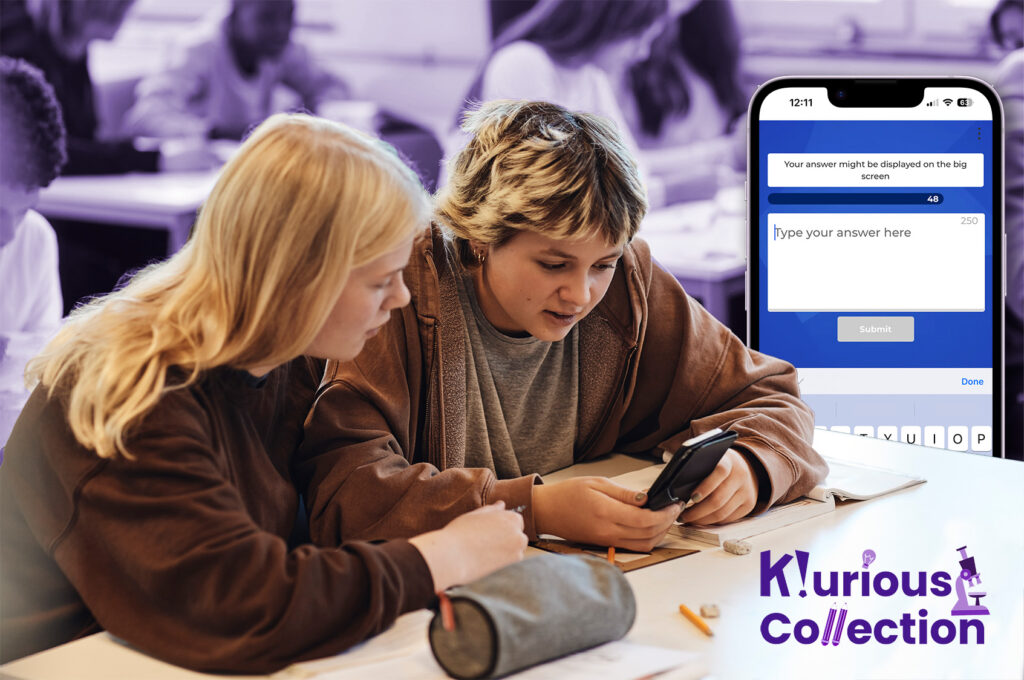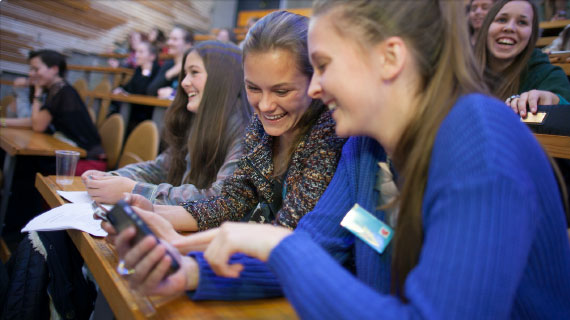
In classrooms around the world, students outnumber faculty. For some educators, this means a lengthy full-day kindergarten roster, while for others – never-ending alphabetized lists with students names, all ushering in and out of rooms between ringing bells and class changes.
As one-on-one time with students becomes even more minimized, creating curriculum and content both meaningful and intentional for individualized instruction is of highest priority. Equipping admin, teachers, and staff with student-driven and student-centered learning protocols aims to ensure instruction is relevant for students, while also appropriate for specific and differentiated learning needs. To celebrate the recent launch of “K!urious Collections”, a student-centered learning module, we’re recapping tools and resources that implore educators to keep students at the forefront of classroom curriculum – from attendance to assessment!
What is student-centered learning?
Student-centered learning is an approach, or even a mindset, in which students have agency and ownership over their learning. This means that students make their own choices about what to learn, how to learn it, and how to demonstrate their learning. To support this, teachers act as facilitators rather than experts. In a student-centered classroom, learners have the opportunity to go at their own pace and engage with issues and projects that are personally meaningful. This can create experiences that are more authentic and equitable, and that build future-ready skills. It can be a significant shift from conventional pedagogies, but one that is well worth it to engage students more deeply and prepare them for lifelong learning.
Student-centered learning with Kahoot! tools
While the gamification of learning on Kahoot! drives student interest and engagement, the long-lasting effects of student-centered learning make Kahoot! tools reliable for lesson planning, assessment, and the student-facilitated growth in between!
At the core, Kahoot! empowers an interactive learning experience, for both the teacher and the student. Shifting this teacher-student dynamic to be one of collaboration and cooperation positions the students as both leaders for their own learning, as well as creators for the experiences and anecdotes they’ll collect along the way. Facilitating and curating this shift is flexible across age and development, while rigid to levels of routines, procedures.
Recognize technology tools and adaptive abilities
How comfortable is your class in accessing technology tools productively and appropriately? What does appropriate technology use look like, sound like, or feel like for your classroom? Encourage students to first discover the tools – allow for exploration and trial-and-error. What did students notice to be more effective in their learning or interest? Collaborate to establish norms for using new tools – whether within Kahoot!, or across educational technology. Discussing general routines, procedures, and expectations when students access a new tool is imperative for group success.
Identify classroom cadence
How do planning and presentation tools fit into your classroom curriculum? While students may use paper-pencil planning templates to organize ideas or brainstorm topics…are there ways to use Kahoot! tools with the same purpose? What systems are in place to ensure long term and purposeful learning? How may Kahoot! presentations ensure this learning is available for both the student, while also accessible for classmates and peers? While some Kahoot!-based practices are quick, and time efficient, student-centered learning approaches may offer a more methodical pace. Consider facilitating pre-assessment opportunities to gather feedback and interest related to a topic via a ‘blind kahoot’ template, or open student passes to allow students to drive their own learning and research. While kahoots may have been originally sought for content review, encourage Kahoot!’ing to be a tool for discussion, collaboration, or reflection.
Using the K!urious Collection
Student-centered and student-driven curriculums are adaptive and applicable to all content areas as an approach to learning, rather than a subject of learning. Similarly, the K!urious Collection planning template is meant to be used as a guide for curating and facilitating student-centered learning experiences. While general prompts and guiding questions are included in this guide, educators are encouraged to pick-and-choose aspects of the template to be more effective for each classroom and roster. Sometimes, this means updating a template between class periods, or maybe school years.
The K!urious Collection includes tools and templates applicable for daily lesson planning, or unit-long curriculums. With this in mind, review the templates before lesson planning begins. Consider a backwards-planning approach, identifying the metrics and indicators of student growth before planning activities. After reviewing the planning tools, inspired educators may consider trialing the lesson plan and sequence independently, resolving any obstacles or misconceptions prior to student-involvement (#KahootTip – The K!rew did this, too! See our completed examples for a backwards-planning example). The collection includes:
- Adaptive curriculum guide
- Lesson planning template
- Student-centered rubric
- Completed: Lesson plan example and corresponding rubric
Measuring success in a student-driven classroom
Maintaining and empowering a student-centered curriculum involves both flexibility and diligence by way of the facilitator. Consider planning with the end in mind and identify and name overarching curriculum goals and assessment aims prior to classroom instruction. This backwards approach will help facilitators to model best practices in planning, design, and implementation throughout the learning process – whether in one day, one curriculum unit, or an entirety of the semester. Often, curriculum goals and assessment metrics can be measured across multiple mediums and modalities. While students may be presenting content on exotic animals, facilitators might assess on skills of a separate curriculum goal. For example, monitoring how the student was able to navigate collaboration and group work, or even a measure of appropriateness in student voice, tone, and articulation during presentations.
Through the implementation of a K!urious Collection module, teachers and facilitators are encouraged to embrace a cyclical and responsive approach to planning, teaching, and assessing. While some aspects of the student-centered journey may include question and answer sessions, data-driven research, and recording findings, other aspects may empower students to name even greater, larger, or more profound questions. Supporting students to feel powerful, charged, and autonomous in their research and learning translates to skills well beyond classroom curriculum, too!
While templates, guides, and even scripts have been provided, facilitators are encouraged to adapt these tools to fit specific, differentiated, and individualized learning goals. All Kahoot!-based tools referenced in this curriculum guide are included in both Kahoot! EDU and Kahoot!+ Gold plans, though content can be customized to fit both high- and low-tech learning environments! Please reach out to our Pedagogy team, should be interested in sharing your experiences with these tools and programs. More information on how to cultivate a student-centered learning environment can be found here.





